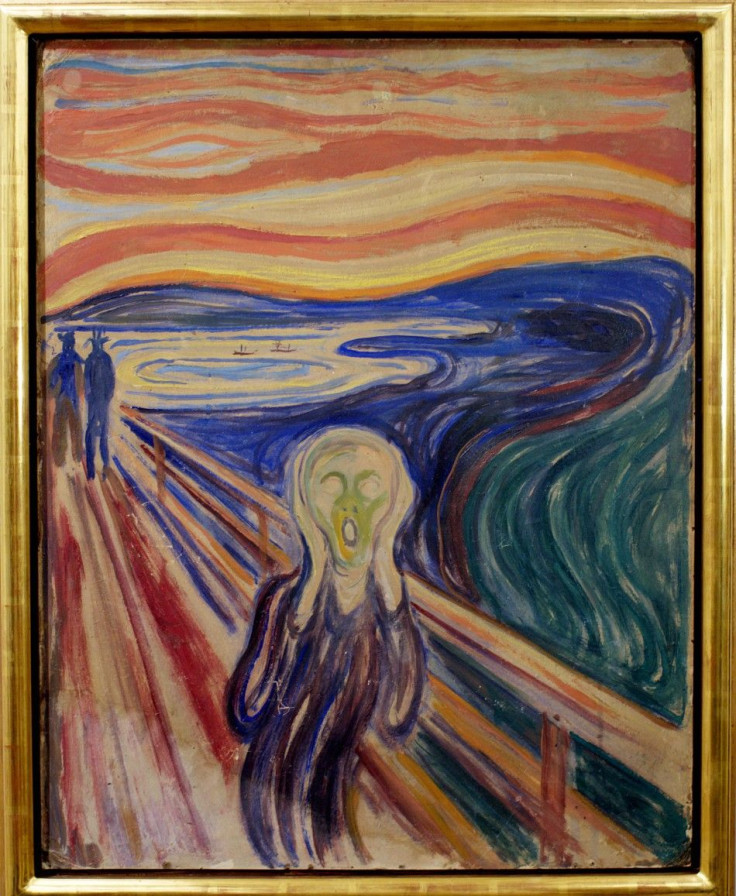Edvard Munch's 'The Scream' Painting Fading Because Viewers Keep Breathing On It

KEY POINTS
- Edvard Munch's "The Scream" is reportedly deteriorating because of human breath, according to researchers
- Scientists conducted X-ray probes to deduce paint samples and composition of the artwork
- Experts' studies have also concluded that Munch's unorthodox pigments can tamper with the long-term preservation of the artwork
Edvard Munch’s “The Scream” is slowly deteriorating because people keep breathing on it, scientists say.
Norwegian artist Munch was best known for his iconic expressionist 1893 painting “The Scream” and was acknowledged as one of the most archetypal images of modern world art. But while Munch’s classic masterpiece has since braved the test of time, researchers have recently announced that the work of art is slowly getting tarnished.
To discover the main cause of the deteriorating artwork, scientists conducted X-ray probes of paint flakes from the masterpiece and compared these with paint samples having similar composition. The researchers identified that cadmium sulfate, a byproduct of cadmium sulfide, was present on the artwork’s paint flecks.
To characterize the aging process on paintings like "The Scream," chemists are using noninvasive techniques to analyze and protect artwork. https://t.co/KKjXr3EuPZ
— C&EN (Chemical & Engineering News) (@cenmag) May 19, 2020
The probes also determined that Munch had mistakenly used an impure cadmium yellow paint, a compound that is often vulnerable in low humidity—especially when being breathed upon. It was also ascertained that human breath contributed to the painting’s discoloration.
“When people breathe they produce moisture and they exude chlorides so in general with paintings it is not too good to be close too much to the breath of all the passersby," Professor Koen Janssens from the University of Antwerp told The Guardian.
In Munch’s “The Scream,” some notably damaged areas of the artwork have been apparent. For instance, the streaks of yellow paint used for the sunset, lake and some parts of the screaming figure’s face have seemingly faded and are slowly beginning to scale off.
Similarly, cadmium-based yellow paints were also used by some of Munch’s fellow artist contemporaries such as Vincent van Gogh and Henri Matisse.
The research was conducted by Letizia Monico, a chemist at the Italian National Research Council in Perugia. Her study which was published in Science Advances, states that Munch's use of unorthodox pigments can pose as a challenge for the artwork’s long-term preservation. The cadmium-based paint has a “tendency to undergo photo-chemical transformations causing color changes and/or structural damage,” as per the study.
Scientists have also revealed that cadmium sulfate appeared in artificially aged paints that were exposed to 95 percent humidity in both light and darkness. Meanwhile using similar samples of painting, signs of decay did not seem to show when kept at 45 percent humidity or lower.
Munch’s “The Scream” has been widely acclaimed as a true icon of modern art—a visual and emotive representation of the postmodern age. The painting is a symbolism of anxiety and uncertainty reflected by the sexless fetal-faced creature screaming on the artwork.

© Copyright IBTimes 2025. All rights reserved.





















